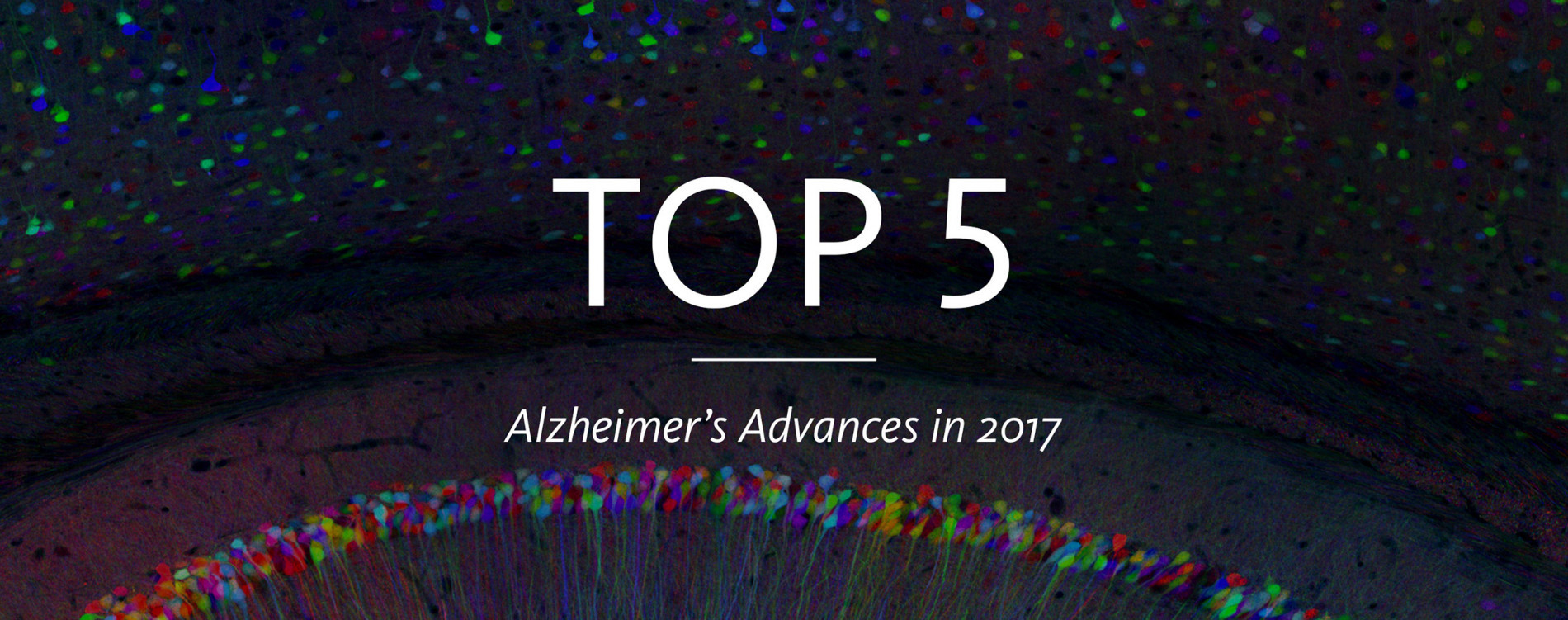In 2017, the Alzheimer’s Drug Discovery Foundation made 29 new grants totaling $16.6 million. Those numbers reflect hope for people living with Alzheimer’s and breakthroughs by researchers working to find a cure. Over the last year, we invested more of our resources in clinical trials, because more promising drug programs have made it that far. Our top five advances in 2017 spotlight the substantial progress we have made toward conquering Alzheimer’s and other neurodegenerative diseases.
- Diversity in the Drug Pipeline
The ADDF has been committed to funding a range of innovative drug targets for Alzheimer’s disease since the day we started back in 1998. Alzheimer’s has a complex and interrelated set of causes, so it makes sense that drugs targeting more than one of those causes will be needed to effectively treat it. Most investments from other funders have focused on only one target: beta-amyloid proteins. But our 2017 Alzheimer’s Clinical Trials Report shows that other targets—including neuroprotection and inflammation—are finally making inroads thanks to ADDF funding. In fact, neuroprotection targets are now the most prevalent in phase 2 clinical trials. - Better Biomarkers
Biomarkers are used to diagnose diseases, monitor their progression, and develop effective drugs for them. In Alzheimer’s, very few validated biomarkers exist, which hampers drug development and can result in patients being misdiagnosed. The ADDF supported the first biomarker ever approved to diagnose Alzheimer’s—the beta-amyloid PET scan—and we continue to invest in these critical tools. In 2017, we supported blood tests for Alzheimer’s being developed at the Florey Institute in Australia and the University of Calgary in Canada. And our funded investigator Dr. Sam Gandy made important progress in his development of a PET scan to diagnose chronic traumatic encephalopathy (CTE) in living patients. - More Prevention Trials
New diagnostic tools and results from large studies are changing how we conduct trials and the patients being treated in them. Findings suggest that treating patients after they are already diagnosed with Alzheimer's disease may not be effective. Thanks to the beta-amyloid PET scan, we know that plaques begin accumulating in the brain years before symptoms appear. This has enabled researchers to start exciting new clinical trials of drugs designed to prevent the onset of Alzheimer’s in pre-symptomatic patients. And we expect more prevention trials in 2018 and beyond. - New Investments and Collaborations
Alzheimer’s is a growing global epidemic, with nearly 50 million affected worldwide. The scale of the problem requires that foundations, companies, universities, governments, and philanthropists work together to solve it. In 2017, the ADDF co-funded a breakthrough combination therapy trial with the Alzheimer’s Association and a brand new drug target being developed at Johns Hopkins with Pfizer’s Center for Therapeutic Innovation. We also expanded our partnership with the Harrington Discovery Institute to provide the resources needed to help promising drug research advance. And we joined our colleagues in celebrating Bill Gates’s announcement of a $100 million investment in Alzheimer’s research and the formation of the Alzheimer's Clinical Trials Consortium (ACTC) and the MarkVCID program by the National Institutes of Health. - The Promise of Neuronal Regeneration
Alzheimer’s is a neurodegenerative disease, which means it involves damaged and dying neurons. Most Alzheimer’s drugs in development have focused on preventing that damage. But a few researchers are developing treatments to reverse it. In 2017, we awarded our Goodes Prize to Dr. Roberta Diaz Brinton for her development of allopregnanolone. Results from a completed phase 1 trial suggest it spurs neurogenesis (i.e., the growth of new neurons from stem cells). With support from the ADDF, Dr. Brinton is now preparing for phase 2 trials with allopregnanolone, which has the potential to become the first regenerative therapy for Alzheimer’s. Earlier this year, another ADDF-funded drug program targeting regeneration entered phase 1 trials. M3 Biotechnology’s NDX-1017 is designed to activate hepatocyte growth factor (HGF) and regrow damaged synaptic connections between neurons.
The ADDF is proud of the progress we have made toward finding a cure for Alzheimer’s. There are more drugs in clinical trials for Alzheimer’s than ever before, and we will continue to do all we can to ensure their success. But we are not there yet. In 2018, we vow to keep forging ahead, as quickly as possible, until Alzheimer’s is no longer a disease to be feared.
